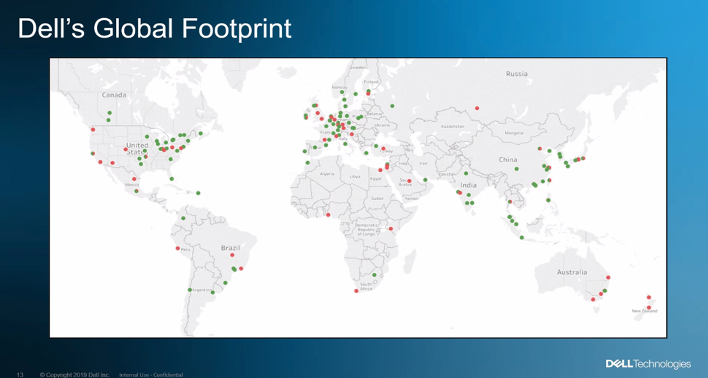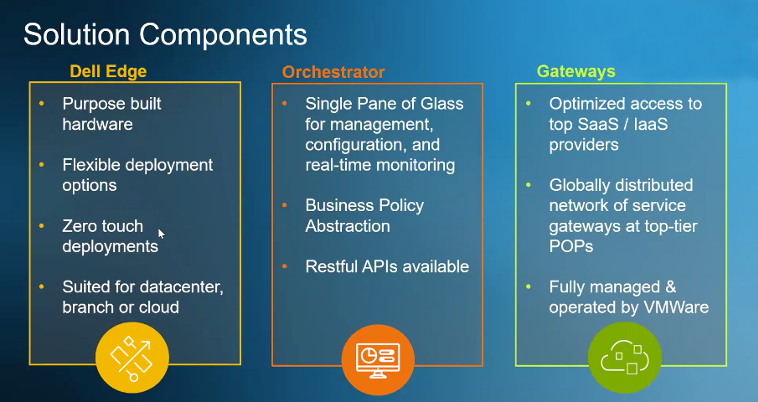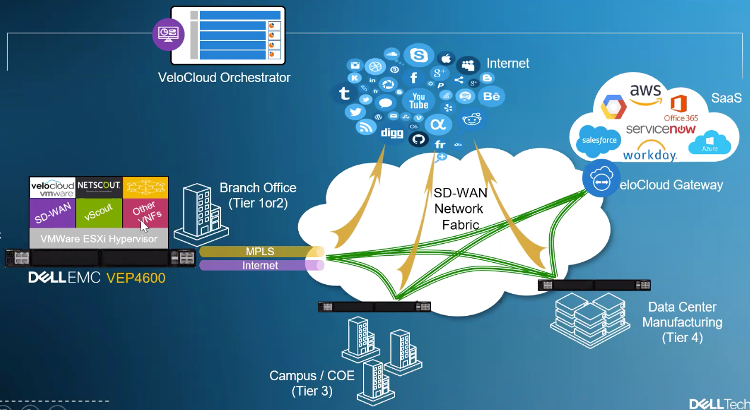When Dell acquired EMC in 2016, it faced one of its toughest challenges yet: consolidating and virtualizing both their networks. The two companies had a lot of people working for them, garnered a lot of revenue, and had different kinds of network-systems and datacenters. So how did Dell’s IT department pull off the first ‘real life’ case of SD-WAN?
Challenges
To no surprise, there were a number of challenges to be faced after the acquisition. The biggest one? Dell and EMC’s huge global footprint. Dell’s IT department had to consolidate a staggering 23 global data centers, 20 000 network devices across the globe, 270 brand locations and 6000 applications across 6 continents. Not to mention that roughly 70 percent of all data had to go through the internet.

Imaginably, time was of the essence. It was therefore imperative that Dell’s IT department act fast and proficient. The central question: how could Dell reorganize and restructure EMC’s legacy as fast as possible?
The why and how of SD-WAN
The benefits of SD-WAN are endless. It’s faster, user-friendly, is significantly lower in deployments costs than hardware-defined networks, and it provides an extra level of security. Yet, pulling the proverbial SD-WAN switch was not an easy one, as ensuring business continuity was Dell and EMC’s number one concern. Every team member had to be able to keep working when the virtualization happened. Not to mention that the vast number of branch offices that were part of Dell and EMC’s merger, required additional security measures.

The solution
Our staffers started looking at a variety of solutions that could help with the integration of the two companies. To successfully pull it off, a purpose-built piece of hardware was needed. Dell nor EMC were traditional SD-WAN vendors at that time, so we constructed an SD-WAN platform that was suitable for all our offices: the Dell EMC Virtual Edge Platform 4600. Our goal was to have zero touch deployments. Ideally, all the offices had to do was download the software and get going. We eventually landed on VeloCloud as our SD-WAN solution with Netscout as a performance manager and Palo Alto as a firewall. More VNF’s were added depending on the hardware platform. Finally, VeloCloud Orchestrator gave the whole operation visibility, ensuring smooth data and application management.

Learn more on SD-WAN
Even though the 4600 was purpose-built, we have since used it for similar undertakings at different companies. Want to know if SD-WAN is a suitable option for your business and which solution is right for you? You can learn more about it here. You can also get in touch with us via live chat, telephone or e-mail at the bottom of the same page.
